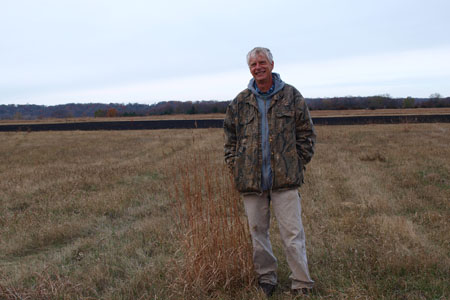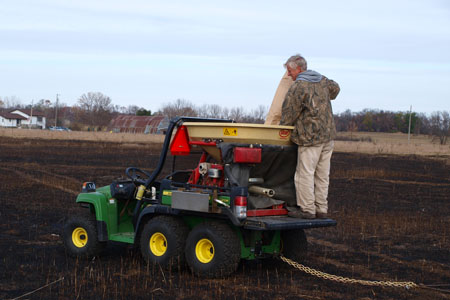Randy Schindle
Private Lands Specialist,
Minnesota Department of Natural Resources, Division of Wildlife
As a child living on his family’s farm along the Le Sueur River, Randy Schindle developed a great love for the outdoors fishing and hunting. “I witnessed a major fish dieoff and major flooding during my childhood, relates Randy. Even in the early 60s fish from the river were not suitable to eat.” His family was very outdoor orientated and it showed. They improved a wetland, managed walnut trees, raised bees, and camped at many parks. “I couldn’t see myself working indoors for any length of time,” says Schindle. “I don’t own a suit.”
Today, Randy works as a Private Lands Specialist for the Minnesota DNR Division of Wildlife assisting landowners with habitat installation and management. In this position he provides education to landowners and government agencies on grassland management, exotic species control and woodland habitats. In a 32-year career with the DNR, Schindle has spent time in a variety of positions including as an Area Forester in Mankato. Some of the more successful projects Randy worked on involved planning and establishing 3,000 acres of prairie restorations and tree plantings on CRP and CREP easements. Randy also assisted government agencies and private organizations with establishing and managing buffers on the Lura Lake Restoration Project, a major success story in the basin.
Randy is extremely hopefully the steps being taken now will lead to an improvement of water quality and quantity in the Minnesota River and other southern Minnesota rivers. “I am greatly concerned with the political polarization among the entities involved with the problems and the solutions to water quality in the Minnesota River,” states Schindle. “The many environmental agencies involved with water quality issues need to become one central clearinghouse for water quality issues. Until all of the population of Minnesota and the affected people downstream realize that water quality issues are important to the environment and economics, progress will be slow.”
“Some of the benefits of prairie restorations especially in this project is pollinator habitat. With the loss of habitat of native prairies and wildflowers and other nectar pollen sources their populations have been crashing in recent years. Benefits of prairies also include holding soil in place and improving water quality. Water percolates through native prairies a lot faster than introduced grasses decreasing surface run off. Very valuable wildlife habitat. Many native grassland birds are diminishing in numbers due to the lack of habitat. Many other game and nongame species benefit from native prairie restorations.”
VIDEOS
Randy Schindle - Background




